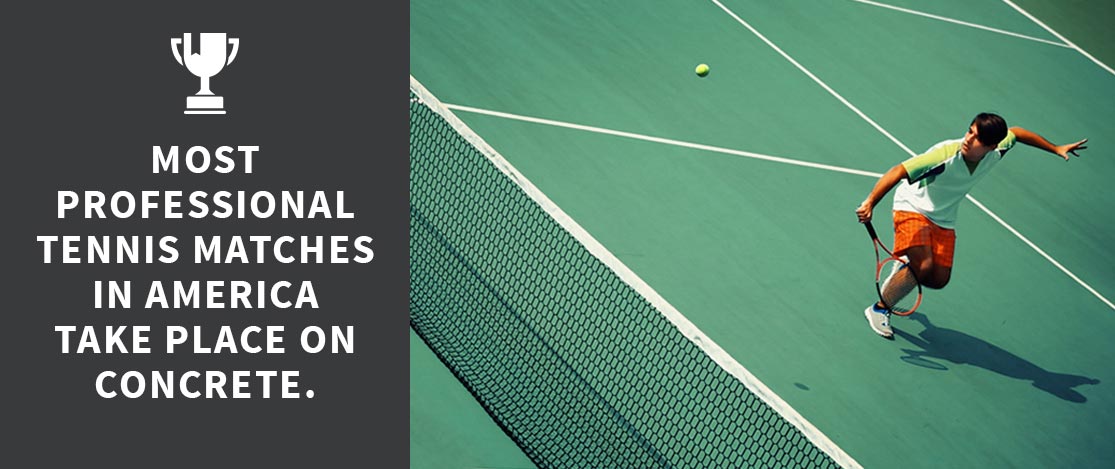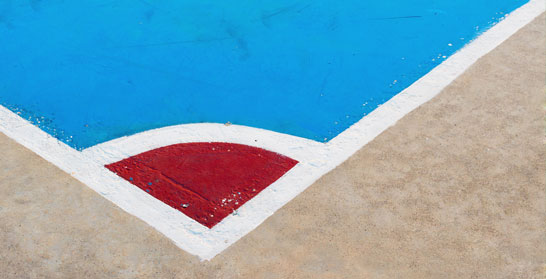The type of tennis court surface that’s used can have a major impact on how tennis is played. There are essentially three types of courts: grass, clay and a hard court, which is generally re-surfaced concrete. Concrete tends to be more expensive, but one of the advantages of a concrete tennis court is that concrete is such a durable material that the court will last much longer and is very easy to maintain.
Professional Tennis
Grass courts must be painstakingly prepared, and tennis play involves low bounce and unstable footing. While softer clay courts are preferred in European tennis circuits, most professional matches in America take place on concrete. Clay is much harder to maintain; it’s easy to damage and can crack or become brittle if it’s allowed to dry out. Without constant maintenance, it leads to unpredictable bounces and difficult footwork.
Concrete courts provide a durable, highly stable surface for fast action, high bounces and reliable ball control, perfect for skilled players. This helps to provide more exciting competition.

Tennis Court Size
A regulation tennis court is 60 feet by 120 feet, according to the International Tennis Federation. It should be no smaller than 56 feet by 114 feet, or a little bigger than a basketball court. Most private courts are built to half size or about 30 feet by 60 feet.
More room will be required outside the lines to permit movement, drainage, fencing or landscaping. The ITF recommends extending the concrete surface 21 feet behind the baselines and 12 feet from the sidelines.
Reinforced vs Post-Tensioned Courts
Reinforced concrete is the usual type of slab for outdoor tennis courts, but post-tensioned concrete is also popular, as it tends to provide better performance. Post-tensioned means that the slab is poured over a grid of steel cables or tendons that are anchored to beams around the perimeter.
Each cable is tensioned as the concrete is curing. This compression helps to improve the tensile strength of the concrete. It also allows contractors to build thinner slabs without control joints.
Color Schemes
Both surface coatings and the concrete itself come in a wide variety of colors. Private courts with non-porous mixtures may not need coating at all. Laid in slabs, the court can involve any color combination the client wants. Usually we think of tennis courts as green and white, or red and white.
But a concrete tennis court can be created to match any personal style. More contrasting schemes make the boundaries more visible, while darker colors make the ball more visible. Lighter colors reflect more sunlight for lower surface temperature and reflect more artificial light for nighttime play.
Del Zotto Products has been providing quality equipment and creative ideas to the concrete industry for more than half a century. Our equipment works well with any type of concrete. Feel free to contact us with any questions about our products or services.

